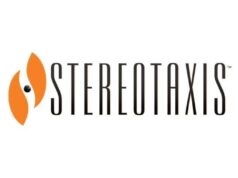Catheter ablation for atrial fibrillation (AF) produced no significant improvement in death, disabling stroke, serious bleeding, or cardiac arrest but did reduce death or cardiovascular hospitalization and recurrent AF in the Catheter Ablation versus Antiarrhythmic Drug Therapy (CABANA) trial, the largest randomised controlled trial of AF ablation in the more-than-two-decade long history of the procedure. The primary clinical results were presented at the Heart Rhythm Society’s Scientific Sessions (HRS; 9–12 May, Boston, USA) by principal investigator Douglas L Packer (Mayo Clinic, Rochester, USA).
The goal of the trial was to compare the safety and efficacy of catheter ablation compared with drug therapy for the treatment of patients with new-onset or untreated symptomatic AF.
CABANA randomised 2,204 patients with new-onset or undertreated AF to catheter ablation (with a primary approach of pulmonary vein isolation) or drug therapy that included either rate or rhythm control (87.2% received rhythm control). Anticoagulation was used in both groups.
In the trial patients were randomised in a 1:1 fashion to either catheter ablation (n=1,108) or drug therapy (n=1,096) and were followed for a median of 48.5 months. The mean patient age was 67.5 years and 37% of those enrolled were female.
A significant proportion of the cohort suffered from co-morbidities: 9% had cardiomyopathy; 15% had chronic heart failure; 10% had prior cerebrovascular accidents or transient ischaemic attacks; 43% had paroxysmal AF; 57% had persistent or long-standing persistent AF and 39% had experienced a prior hospitalisation for AF.
The primary endpoint of the trial (the composite of all-cause mortality, disabling stroke, serious bleeding, or cardiac arrest) occurred in 9.2% of patients in the drug group and 8% of patients in the ablation group (intention to treat HR: 0.86; 95% CI: 0.65, 1.15; p=0.303). There were also no significant differences in the individual components of the primary endpoint. The death rate was 5.2% vs. 6.1% for ablation versus drug therapy (HR: 0.85; p=0.38). A secondary composite endpoint of all-cause death or cardiovascular hospitalisation favoured ablation (51.7% vs. 58.1%; HR: 0.83; 95% CI: 0.74, 0.93). The procedure also reduced the recurrence of AF (HR: 0.53; 95% CI: 0.46, 0.61). Detailed results regarding recurrent arrhythmias, including AF burden as assessed by serial Holter monitoring during follow-up, were presented at the recent European Society of Cardiology Congress (ESC; 25–29 August, Munich, Germany).
Crossover was common with 9.2% of patients in the ablation arm not undergoing the procedure and 27.5% of those in the drug therapy arm ultimately undergoing ablation. Both of these factors would be expected to dilute any treatment benefit produced by ablation. When the investigators performed sensitivity analyses on the primary intention to treat results using “treatment received” and “per protocol” definitions of treatment to account for the effect of crossovers, significant treatment benefits were seen both for the primary endpoint (treatment received HR: 0.67; p=0.006) and for mortality (treatment received HR: 0.60; p=0.005).
In an analysis of the quality of life data collected in CABANA, AF patients randomised to ablation compared to drug therapy had incremental, clinically meaningful and significant improvements in AF-related symptoms and quality of life, relative to drug treatment, and the benefit was sustained over five years’ follow-up. In addition, both groups showed substantial improvements over the first 12 months, which were sustained for five years. These quality of life results were also presented at the ESC.
As in any unmasked trial, post-randomisation treatment biases might have affected the trial outcomes. While the reductions in the primary endpoint and in overall mortality produced by ablation were not statistically significant, the results were affected by the large number of treatment crossovers and by lower than expected event rates. The significant reduction in recurrent arrhythmias and the important improvement in quality of life with ablation (assessed by intention-to-treat), and the absence of safety concerns with ablation provide new and important information on the benefits of catheter ablation for treating patients with atrial fibrillation like those enrolled in CABANA.









